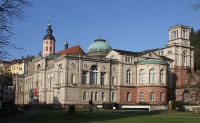
The playground of Europe's royalty and aristocracy in the early 1800s, Germany's famed holiday resort town of Baden-Baden, in the heart of the Black Forest, still draws thousands of tourists who come to relax in the waters and gamble in the casino.With a name that means 'Bathing Bathing', it's not hard to work out the prime attraction of the town. The Friedrichsbad bathhouse has been the scene of much pampering for more than 120 years. Those seeking rest and recuperation on holiday still enjoy its steamy marble confines, soaking in mineral water in the nude. Male and female facilities remain separate, and the roughly three-hour bathing routine follows a strict regimen of showers, hot-air blasts, steam baths and massages.Nearby are the equally famous Baths of Caracalla, which feature indoor and outdoor waterfalls, swimming pools and hot tubs. The complex houses a 2,000-year-old Roman bath, once used by the Emperor Caracalla.The Baden-Baden casino was built in the 1850s in the style of the Palace of Versailles, and is worth seeing while on holiday, even for those who do not gamble. Baden-Baden is also home to several art museums, a concert hall, and the Castle Hohenbaden.
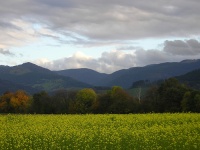
Known for its Black Forest cake and cuckoo clocks, the beautiful city of Freiburg has plenty to offer. The recommended way to explore the town and surrounds is by bicycle (there are plenty for hire) along more than 93 miles (150km) of bicycle paths. Visitors will find a wealth of ancient history, some delicious food and wine, and breath-taking natural beauty in Freiburg. The city (really a large town) is known for its university, magnificent cathedral and medieval treasures, and a somewhat bohemian vibe with its street musicians and pavement artists.The Altstadt (Old City) is picturesque, featuring canals and dozens of historic buildings. A cable car carries passengers on scenic trips up the Schauinsland Mountain from the Stadtgarten to enjoy the view from the mountaintop restaurant. Visitors very much enjoy the local Black Forest cuisine on offer in Freiburg's restaurants, and the local wines produced in the region surrounding the city. The weather in Freiburg is renowned to be sunny and warm compared to other parts of Germany, and the city takes full advantage of this to host several festivals throughout the year. There is a music festival in mid-June each year, followed by a wine festival at the end of June and a wine-tasting festival in mid-August.
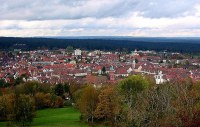
The largest city in the Black Forest region of Germany, Freudenstadt is a great place to start a holiday in the Black Forest, and a popular base from which to explore the stunning region. The town is known for its sunny, warm weather, meaning visitors can enjoy its many outdoor attractions. One of these is the lovely central town square which is home to the largest marketplace in Germany and a great place to do some holiday shopping. Most buildings in Freudenstadt were flattened in World War II. However, there are still several interesting sites, including the Stadtkirche, which dates back to the 17th century. Visitors to Freudenstadt also enjoy the many good restaurants which serve up tasty local cuisine.While a holiday in Freudenstadt is worthwhile and the city attracts many people in its own right, most visitors come to enjoy the surrounding region, which boasts some of the best skiing, hiking and camping in the Black Forest. The Parkwald, Germany's largest nature reserve, is nearby, and has many miles of hiking trails. Fruedenstadt is conveniently situated on the Schwarzwald Hochstrasse highway, which stretches to Baden-Baden and meanders past many quaint shops and cafes, as well as popular ski slopes.

Although you may find yourself inundated by cuckoo clocks everywhere you look in the Black Forest, the German Clock Museum's large collection of timepieces is the most comprehensive of its kind in the world, and offers over 8,000 examples of clocks which have been collected over the last 150 years. Cuckoo clocks have been made in the Black Forest region since the early 18th century, and much of their development occurred there. It is remarkable how much you can learn about the region's history and culture by browsing through the clocks, which have come to define the Black Forest in the global imagination. The museum doesn't only exhibit local clocks though, it has many pieces from overseas. One of the highlights is an electrical clock made by Alexander Bain in London in about 1845.Mapping the advances in the craft of clock-making is very interesting and while some of the pieces are very beautiful others are remarkable because they are so original; for instance, there is an ingenious alarm clock designed for a deaf couple in 1942 which uses a flashing light instead of a bell. Tours are conducted by appointment, and there are English guidebooks available.
Address : Robert-Gerwig-Platz 1 D-78120 Furtwangen, Baden-Wurttemberg
Opening times : 9am - 6pm daily.
Admission : €8 for adults, €7 for Schoolchildren, Students, Black Forest Guest Card holders (Schwarzwald-Gästekarte)
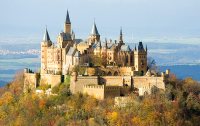
The magnificent castle at Hohenzollern is perched on a hilltop 31 miles (50km) outside of Stuttgart. The current structure was built in the 15th century, although mention of a castle on the site dates back to 1267. The second Hohenzollern Castle, which stands proud today, was constructed in 1454 to be bigger and more heavily fortified than before. During the Thirty Years War, it was used as a fortress, changing hands between several families. Since the maintenance of the building was neglected, it dilapidated and turned into ruins by the beginning of the 19th century, only to be renovated and rejuvenated from 1850 onwards. The castle is incredible, with a fairy-tale neo-Gothic facade set against spectacular panoramic views of the surrounding countryside of the Black Forest. It is widely acknowledged as a triumph of 19th-century military architecture and its many towers are one of its most striking features. The castle hosts a number of attractions and events, including an open-air cinema, museum, and seasonal Christmas market.
Address : Verwaltung Burg Hohenzollern
Website : www.burg-hohenzollern.com/startpage.html
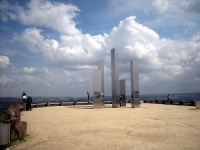
Founded by the Romans as a mercantile centre on the northern edge of the Black Forest, Pforzheim, at the confluence of the Wurm, Enz and Nagold Rivers, is today the centre for traditional jewellery and clock-making in Germany. The town is home to the fascinating Technisches Museum, commemorating the important role time-keeping has played in Pforzheim's history. The museum features a reconstruction of a clock-making studio in the 19th century, among other things. Jewellery is also important in the town and the Schmuckmuseum collection features pieces dating from the 3rd century BC through to modern times. Pforzheim also has an interesting Alpine Garden which has 100,000 or more varieties of high-altitude plants growing in a natural setting beside the Wurm River.Tragically, about a quarter of Pforzheim's population was killed in air raids during World War II and up to 80 percent of its buildings destroyed so today it looks much more modern than one would expect for an ancient settlement. Visitors can still see some charming 1950s buildings from the rebuilding project though and some historic structures have survived. The town's involvement in the war is interesting, particularly for military history buffs. On a lighter note, the famous rock band Fool's Garden originated in the town.
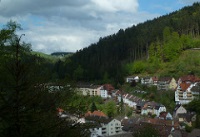
Another charming village in the Black Forest, Triberg has a lot to offer visitors and is something of a cultural centre. The true spirit of the Black Forest is brought to life in the Schwarzwald-Museum of Triberg, which documents the old traditions and lifestyle of this unique region, with displays of costumes, handcrafts (including clocks, naturally) and furnishings. It also boasts Europe's biggest barrel organ collection. Another of Triberg's most interesting attractions is the pilgrimage church called Maria in the Fir, an 18th-century, Baroque church.Nearby Gutach, a popular excursion from Triberg, contains original Black Forest homes up to four centuries old at the Freilchtmuseum Schwarzwalder. An exceptional waterfall at Gutach, one of Germany's highest waterfalls, drops down the mountainside in seven stages, accessible by a lovely walking trail. South of Triberg, a huge variety of elaborate Black Forest clocks are on display at the German Clock Museum, to be found at Gerwigstrasse in the village of Furtwangen. The Baden Black Forest Railway, which runs through spectacular mountain and forest scenery, winds and tunnels through the area around the town.

Travel Guide powered by Word Travels, copyright © 2023 Globe Media Ltd. By its very nature information in this travel guide is subject to change at short notice and travellers are urged to verify information on which they're relying with the relevant authorities. Neither Globe Media Ltd nor Travel Vogue can accept any responsibility for any loss or inconvenience to any person as a result of information contained above.